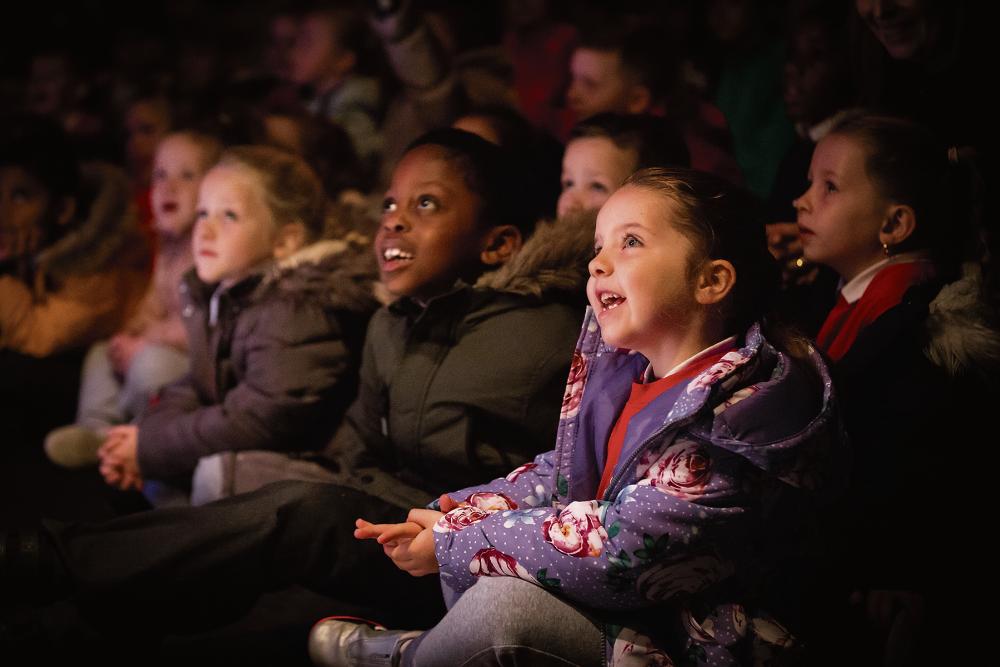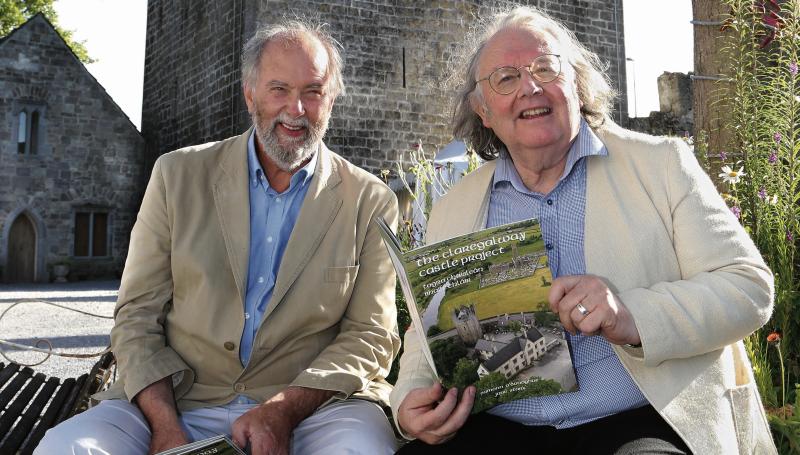Arts
Adventures of a young writer in Galway during the 1970s

Arts Week by Judy Murphy
Belfast-born poet and critic Gerald Dawe, Director of the Oscar Wilde Centre for Irish Writing at TCD, recalls life in Galway and the publication of his first book in 1978.
The flat in Abbeygate Street was up an alley between a boutique and the Roaring Twenties pub. For its day, in the early 1970s, it was quite spacious given what was generally on offer in Galway City to the slowly burgeoning population of university students, nurses, young professionals and the floating number of visitors who never left – drifters from a previous time whose lives seemed in some magnetic attraction, earthed to the city, without any visible means of financial support or sign of a day’s (or night’s) work.
Others – barmen, actors, street photographers, visitants, musicians, perpetual students, stall holders, Army cadets, ones ‘in from the country’, student medics, civil engineers, those ‘doing a B.Com.’ – all shared a life of Riley in the Cellar Bar, the Tavern, the Skeff’ and the Castle Hotel, no one more so than myself.
Supping up the summers, which did seem to stretch into late October, and covering up our heads when the drenching rains swept in off the Claddagh Basin and drifted along the canal-ways to be met with downpours drifting in along the Corrib into Newtownsmyth and the Salmon Weir Bridge, life was good.
I spent some time at this particular interface, above the Court House, in what was then the City library, reading 19th century Irish novels and memoirs, and slipping off in my mind’s eye into the streetscape down below – the small but elegant bridge, the eel nets and traps, the racing waters, and the calm canal bank, literally under the window of the reading room.
Occasionally a swan would glide by out of the ordinary ebbing light of a winter’s afternoon. The imposing Cathedral looked so imperiously out of place in this wonderland.
These few streets, approaches in to the old city, where my true first belongings and beginnings; they became my home. I grew up there, an inner landscape as much as a neighbourhood: The Four Corners, Lynch’s Castle, Market Street, Abbeygate Street, Upper and Lower, as far as Woodquay, its perfect little park, the rowing club and those magnificent railway pillars – symbols of high summer. Not a home from home, but my new found land.
There was Jimmy Cawley who sold clothes second-hand, his mighty Chaucerian face atop a Crombie coat and heavy scarf, beamed through the murky morning light; the undertaker who would recite at the drop of a hat the death scene of Dickens’ Little Nell; the humane Heaney brothers whose butcher shop kept the wolf from our door on a couple of occasions; the little shop that only two people alone could stand up in, and of course, the original Sally Long, who emerged from behind a door to the long low bar like a figure out of the mythological past.
The shops were homes as well which meant that when we all surfaced after the streets were aired. We had at least that in common – we lived together: an unpredictable mosaic of lives and histories who shared a very old part of the very old port and market town of Galway.
It could have been Genoa as far as I was concerned. The romance never ended. Nestled within the city walls sat St Nicholas Church with its solitary trees and lopsided gravestones and railings and the curiously named Bowling Green where Nora, Joyce’s girl had stayed, and on the site of a Convent (so I was told) The Connacht Tribune.
For more, read this week’s Connacht Tribune.
CITY TRIBUNE
Marking Baboró’s birth as children’s festival turns 25

Baboró Children’s Arts Festival, which marks its 25th anniversary this year, changed the face of arts in Ireland by putting young people front and centre. “Until then, there wasn’t any theatre for children in Ireland, unless it was educational,” recalls Patricia Forde, a driving force in establishing Baboró.
“Theatre existed, but it wasn’t art. We brought in companies from Italy and Spain whose shows were just about art, not education. And they were beautiful.”
From the get-go, Patricia loved that companies created work specifically for certain age groups – toddlers for instance – that focused on their stage of development.
Baboró grew out of Galway Arts Festival and it reflected a changing audience dynamic.
In the early days of the Arts Festival, when Ollie Jennings programmed it, Patricia worked in the box office. The audience then was made up mostly of single people, many of them students and backpackers, she recalls. By the time she took over as Artistic Director in the early 1990s, that had changed.
“People were looking for more family shows.” She obliged, by setting up a family strand in the Festival, known as Baboró. Little John Nee, with his children’s shows, “was our anchor tenant”, she says of his annual appearances at the former Mercy Secondary School in Newtownsmyth. The first year when there wasn’t enough funding to dress the school yard in bunting, Patricia’s sister, Ailish, improvised by hanging colourful clothes on clotheslines across the yard. That year too, a fire engine was one of the main attractions and kids queued up to get their photos taken with it, she laughs.
This is a shortened preview version of this article. To read the rest of the story, see this week’s Galway City Tribune or Connacht Tribune. You can buy a digital edition HERE.
Connacht Tribune
Moving west to make her artistic mark

Bernie Dignam’s grandfather fought in World War I and was one of the unfortunate soldiers who saw action in Gallipoli, a horrific experience which damaged him for life. But he never forgot his fellow soldiers and for years afterwards, would mark Remembrance Sunday by wearing a poppy and marching in their memory.
In the 1920s, that didn’t win him many fans in the newly-independent Ireland, says his artist granddaughter Bernie who lives in Moyard, outside Clifden. Bernie never knew her granddad but admires him for staying true to himself, despite the consequences. It’s easy see why she would because she’s cut from the same cloth.
Her grandfather was from north inner-city Dublin and Bernie was reared in Finglas, the oldest of a family of eight children. Her journey to North Connemara brought her to Limerick and Monaghan before she finally arrived in the 1990s, to work in Letterfrack.
Moyard, between Clifden and Letterfrack, is where she built her home and it’s where she now runs her studio and art gallery, showcasing her work across a variety of genres – felting, weaving, batik and printmaking. It’s inspired by nature, mostly by the local landscape.
Bernie’s background is in design – after graduating from DIT, she did a research project in UL on the use of Irish softwood.
But there weren’t many jobs in design and product development when she left college and she didn’t have any connections in the industry. So she did a diploma that would allow her teach art and design, which is where she developed her passion for such processes as felting and batik.
She’d grown up around textiles, she explains, as her father, Christy, was an upholsterer. His day job was with CIÉ as a steady income was needed for his large family. But in his spare time, he upholstered furniture in a shed at the back of their house. She describes him as a master craftsman and an expert on fabrics. Her mother, Teresa, meanwhile, was “very practical. She fixed our bikes, made our clothes and knitted Aran jumpers for us”.
Read Judy Murphy’s in-depth interview with Bernie Dignam in this week’s Connacht Tribune, on sale in shops now – or you can download the digital edition from www.connachttribune.ie
Connacht Tribune
Bowing out after 31 years’ service

James C Harrold has played a key role in Galway’s artistic life for more than three decades. The retiring City Arts officer reflects on his years working in the county and city, and shares memories of artists, events and places, while also looking to the future.
Since 1990 I have been working with the artists, arts organisations, communities and neighbourhoods of Galway; for ten years as City and County Arts Officer, and subsequently specifically in the city. I had returned to Galway from Wexford Arts Centre where I had been Artistic Director, but before that I had spent a lot of time in the West. Every childhood summer was enjoyed in Barna, I went to college here, to UCG, and had worked with Galway Arts Festival, the Arts Centre and Macnas.
My romantic and adoring view of Galway originated in early-years visits to Kennys’ with my bibliophile father, or to Charles Lamb’s studio in Carraroe, or to my mother’s family in musical Belclare at the foot of Knockma.
‘Galway is a paradise,’ I stated firmly in a newspaper profile to mark my appointment.
I was one of the first of the new Local Authority Arts Officers, co-funded by the Arts Council with a brief to develop local arts.
Based in possibly Ireland’s oldest prefab at the back of the County Buildings in Prospect Hill, a handy base to explore from, create and curate projects, networks and funding opportunities, I was tasked to advise and assist the city and county in policy, programming and grant aid. My dear friend and college colleague Michael Diskin had returned to Galway on the same day, February 19th.
For the next 22 years, with Mike from 1994 ensconced in the Town Hall Theatre we met two or three times a week. Back in the ‘80s we had been inspired by Ollie Jennings and Páraic Breathnach, who had laid the foundations for so much of Galway’s creative reputation. We were following in their mighty footsteps and developing our own pathways too.
Early forays into the county involved bringing Little John Nee to the towns and villages every weekend that summer. His children’s shows, mainly open-air in the little market squares of east and north Galway opened conversations that are continuing still.
Read the full story in this week’s Connacht Tribune, on sale in shops now – or download the digital edition from www.connachttribune.ie












